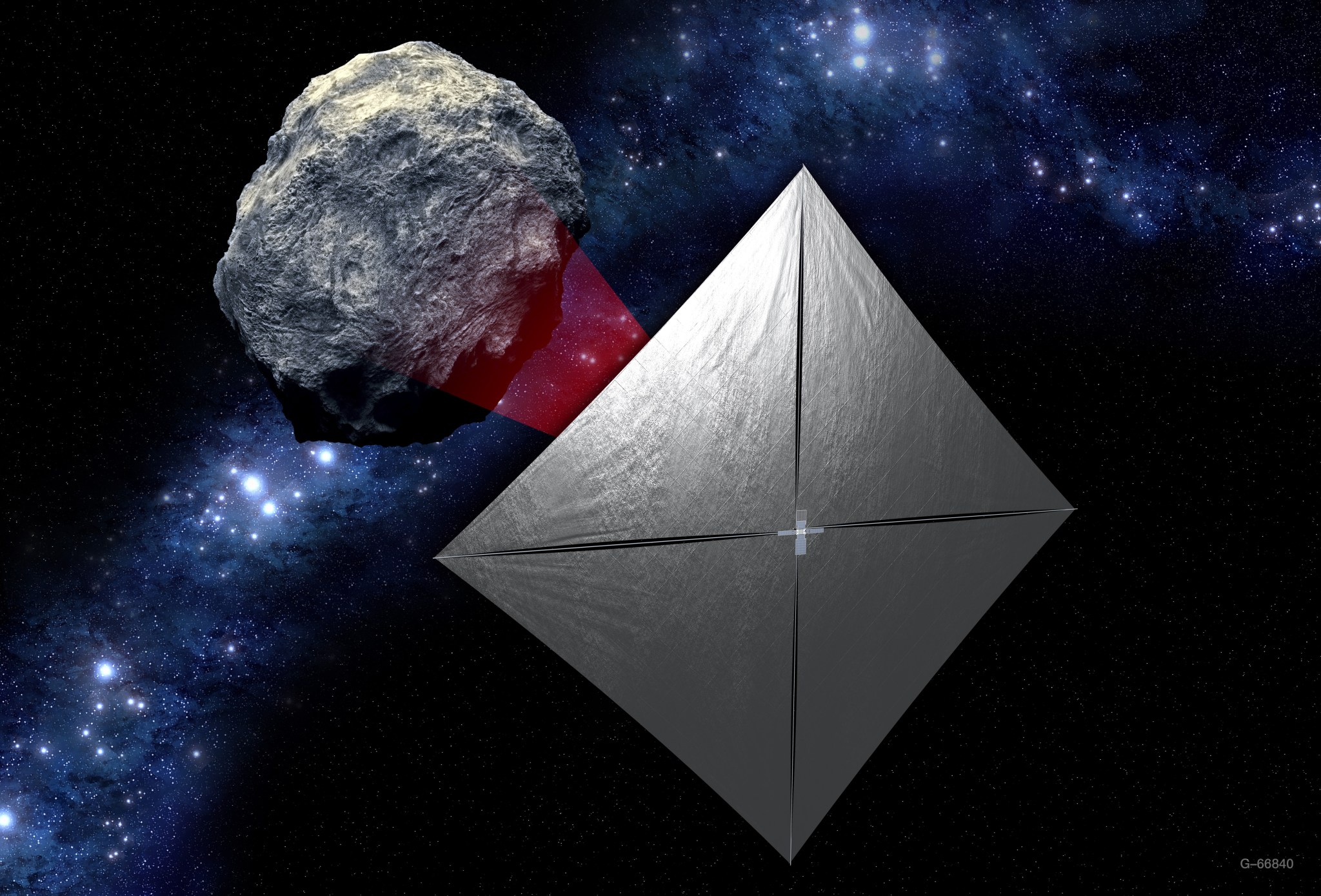When NASA’s new Space Launch System (SLS) launches on its first flight, it will be doing some serious multi-tasking. Not only will Exploration Mission-1 test the performance of SLS and its integration with the Orion spacecraft – the agency plans to use its massive lift capability to carry nearly a dozen nano-satellites to conduct science experiments beyond low Earth orbit.
NASA’s newest rocket will launch Orion on an uncrewed test flight to a distant retrograde orbit around the moon. Tucked inside the stage adapter — the ring connecting Orion to the top propulsion stage of the SLS — will be 11 self-contained small satellites, each about the size of a large shoebox.
“NASA is taking advantage of a great opportunity to conduct more science beyond our primary focus of this mission,” said Jody Singer manager of the Flight Programs and Partnerships Office at the Marshall Space Flight Center in Huntsville, Alabama. “While this new vehicle will enable missions beyond Earth orbit, we’re taking steps to increase the scientific and exploration capability of SLS by accommodating small, CubeSat-class payloads.”
About 10 minutes after Orion and its service module escape the pull of Earth’s gravity, the two will disconnect and Orion will proceed toward the moon. Once Orion is a safe distance away, the small payloads will begin to be deployed, all at various times during the flight depending on the particular missions.
These CubeSats are small nano-satellites designed to be efficient and versatile. The masses of these secondary payloads are light — no heavier than 30 pounds (14 kilograms) — and will not require any extra power from the vehicle to function. They will essentially piggyback on the SLS flight, providing what otherwise would be costly access to deep space.
“We are expanding the capabilities of this particular SLS test flight,” said Joseph Pelfrey, deputy manager of the Exploration and Space Transportation Development Office at Marshall. “The rocket will be the strongest ever built by NASA and we want to take advantage of that design. Flying secondary payloads is something we plan to do for missions to come and provide the science community an opportunity they haven’t had before.”
The dispensers on the adapter ring will be built with commercially available materials. No pyrotechnic devices will be a part of the payloads and each will be ejected with a spring mechanism – similar to opening a lid on a toy jack-in-the-box.
The principal investigators and engineers for the payloads will work with the secondary payload integration team to develop mission-specific requirements and verify interfacing and safety requirements are met. Multiple organizations at NASA Headquarters in Washington are soliciting inputs for the available EM-1 secondary payload slots, and three have already been selected for further development: Near-Earth Asteroid (NEA) Scout, Lunar Flashlight and BioSentinel.
Both NEA Scout and Lunar Flashlight involve Marshall engineering and science teams, while BioSentinel is managed by NASA’s Ames Research Center in California.
NEA Scout, using solar sail propulsion, will fly by a small asteroid, taking pictures and making observations that will enhance the current understanding of an the asteroid environment and will yield key information for future astronauts exploring an asteroid.
“A solar sail works best when deployed in deep space and SLS will get us there,” said Les Johnson, principal investigator for NEA Scout at Marshall. “It will take us out of Earth orbit and to interplanetary space — where we need to be to deploy the solar sail. It’s a perfect ride to begin our mission.”
NASA’s Lunar Flashlight will scout for locations on the lunar surface that are rich in resources that, once broken down into their component molecules, could be used in future exploration, such as building materials, propellant, oxygen and water. Lunar Flashlight will use a large solar sail, similar to the NEA Scout sail, to reflect sunlight and illuminate the moon’s permanently shadowed craters and then the science instruments will measure the surface water ice.
BioSentinel will use yeast to detect, measure, and compare the impact of deep space radiation on living organisms over long durations beyond Low-Earth Orbit, which will help us understand the effects of the deep space environment on biological systems as we plan to send humans farther into space than ever before. The BioSentinel mission will be the first time living organisms have traveled to deep space in over 40 years and the spacecraft will operate in the deep space radiation environment throughout its 18-month mission.
Exploration Mission-1 will serve as a proving ground for the integrated Orion spacecraft and SLS, allowing designers to steadily move forward with development of the vehicle and prove the systems’ ability to carry and deploy experiments yielding invaluable science results.



























